
Water2Drink Blog
It's Hot Out There!Monday, July 16, 2018 - Posted by Water2Drink, in Health, Water NewsRecently, our family attended an outdoor music festival. It
was an all-day event and plans were made to carry sunscreen, chairs, lots of
drinking water and snacks. While we were prepared for a hot day, we did not
realize there would be no shade at all, and temperatures were in the mid- to
high 90’s that day. One of our family members unfortunately was not able to
handle the heat, and began exhibiting symptoms of heat exhaustion. We made the
decision to leave the show early, and he quickly recovered once we moved
indoors and he was able to cool down. It is surprising how quickly heat exhaustion and heat stroke
can occur. Certainly the first and best defense against heat related illness is
to stay well hydrated. Drinking plenty
of water during a hot spell or season is a given. But don’t wait until you are
already hot or overheating. Your hydration plan should begin 12 to 24 hours
before exposure to heat and humidity. Once you are exposed to the heat, you should
continue to drink water, approximately 16 oz or so every 15 minutes, which is
about two liters per hour, according to “11 Hydration Strategies for Hot
Weather” at Active.com.
Water composes almost 60% of the adult body, and proper fluid
intake is an important part of maintaining health. The safest water to drink is
not necessarily bottled water (which also creates an environmental problem due
to the manufacture and disposal of the plastic bottles), but rather filtered water,
right out of the tap, carried in a safe container such as stainless steel or
glass. |
 1 Comments 1 CommentsTweet |
Mapping A Contamination CrisisFriday, June 30, 2017 - Posted by Water2Drink, in Water News, Water Safety
While the ease and convenience of modern chemical and
industrial compounds improve our daily lives, there is a cost to not only to the
environment, but also to consumers. Add
to that the current US Government’s disengagement with policies and procedures
for protecting its’ citizens, and you have a recipe for disaster. Fortunately, there is still third-party, independent research and
reporting that is available to concerned citizens. Recently, the Environmental
Working Group (EWG) posted an online interactive map to help locate those
communities that are contaminated with toxic chemicals. “Mapping A Contamination Crisis” is a
collaboration between the EWG and the Social Science Environmental Health
Research Institute at Northwestern (IL) to provide “federal drinking water data
and information on all publicly documented cases of PFAS pollution from
manufacturing plants, military air bases, civilian airports and fire training
sites.”
“PFCs – highly fluorinated toxic chemicals, also known as PFASs, that
have been linked to cancer, thyroid disease, weakened immunity and other health
problems – continues to expand with no
end in sight,” states the EWG. In fact, the EPA has established health
advisories for these contaminants so that local and state officials can take
actions to protect citizens.
According to an article in PRWEB dated September 2, 2016, “the
myriad uses of PFCs are major contributors to their widespread danger. Used in
both food packaging as well as a large assortment of products designed to be
resistant to heat, oil, grease, and water, these chemicals have been found in
higher-than-recommended concentrations in 33 of the 50 states in the country.
And because it can take years for the human body to dispose of PFCs once
ingested, people are prone to PFC accumulation and increased chances of
negative health effects. Furthermore, the EHP study finds that young children
exposed to these contaminants are more likely to suffer from decreased levels
of immunity against diphtheria, tetanus, measles, and influenza, even with
prior vaccination.”
The actions taken by your local water authority are necessary and
beneficial. Despite this, wouldn’t you want to take any actions yourself that
would prevent the ingestion of PFCs? In fact, the Minnesota Department of
Health determined in 2008 that “the use of carbon block filters were effective
in treating the presence of PFCs (which include the aforementioned
perfluoroalkyl substances as well as perfluorooctanoic acids, perfluorooctane
sulfanate, perfluorobutanoic acids, and other perfluoro- chemicals) in drinking
water. And because carbon block filters treat the presence of PFCs through the
action of physiochemical adsorption, increasing the surface area and density of
the filter medium dramatically increases its effectiveness while also
compensating for some of the drawbacks of granular activated carbon (GAC) and
RO filtration methods.”
In simpler terms: Water2Drink believes using a solid carbon block water
filtration system such as a Multipure Drinking Water System “offers a vastly
greater carbon surface area to filter PFCs, without the propensity for
channeling that affects GAC. This makes them an ideal point-of-use filtration
method to treat PFCs.”
Water2Drink.com encourages you to visit the link above to the
interactive EWG map, and to study the effects of PFCs in your local water
supply. Remember, if you don’t filter your water, YOU become the filter!
|
 3 Comments 3 CommentsTweet |
Bad ScienceWednesday, May 31, 2017 - Posted by Water2Drink, in Health, Water News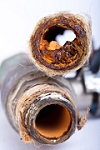
An outstanding new documentary aired tonight on PBS. “Nova:
Poisoned Water,” outlines the water delivery system to our homes and
businesses, and it uses the water disaster in Flint, MI as “a cautionary tale.”
You can also find the program at this link. To recap, the Flint, MI water crisis of 2014 began when the
city switched its water supply from Lake Huron, to the #Flint River. However,
chemical reactions between the river water and the lead pipes that delivered
Flint’s water caused the pipes to corrode and eventually leach lead into the
drinking water supply, thereby poisoning the water throughout the city. The #leadcontamination
was found and exposed by a Virginia Tech researchers such as Marc Edwards, who
also gained national attention in Washington, DC, a decade earlier.
The same contamination happened in Washington, DC, in 2004. “A
coverup of lead problems in Washington’s water helped promote the notion that
children couldn’t be seriously injured” by contaminated water, according to a Washington Post article, “The Scary
Story About How Lead Gets Into Drinking Water” by #VickyHallett. The city
governments of both Washington, DC and Flint, MI relied upon a protective
coating called “scale,” which normally forms as a chemical reaction between
pipes and properly treated drinking water. Washington and Flint both overlooked
vital corrosion control measures when the water source changed, says the
#WashingtonPost article.
Water2Drink.com wants you to be aware of the many types of
lead contamination and the science behind how it can occur in your drinking
water system. Water2Drink.com respects the work that #VirginiaTech is doing to
alert the public about drinking water contamination in these major cities, but
we also believe everyone should become knowledgeable about the water supply in
their own city or town.
Water2Drink sells only the Multipure family of Drinking
Water Systems, all of which are independently tested and certified in lead
reduction of over 99%. Contact #Water2Drink today and let us help you determine
the best filtration system for your needs.
|
 1 Comments 1 CommentsTweet |
The Million Dollar Club!Friday, April 28, 2017 - Posted by Water2Drink, in Health, Water News, Products, Water Safety
Multipure is pleased to recognize Water2Drink.com for the
extraordinary achievement in reaching $1,000,000 or more in product sales. It
is a rare achievement, and those who reach it have proven their dedication and
sales ability. Water2Drink – Ron New
and Brian Browning
Hailing from Virginia, Network Director Ron New has been a
Multipure Distributor for over 30 years. Although he was introduced to
Multipure as a customer in 1983, … it took five years before Ron joined the
business opportunity, enticed by the prospects of the compensation plan. While
he is well aware of Multipure’s superior quality, and of the benefits of
drinking healthy water, he also understands the tremendous value of Multipure’s
products and the way Multipure’s business opportunity can help support his
family; because of this, he feels it is his responsibility to educate everyone
about the need to #filter their water and the benefits of #Multipure.
Under the business name of Water2Drink, Ron and his
behind-the-scenes business partner, Brian Browning, have found tremendous
success with Multipure; it is through this success and Ron’s decades of
experience that they have learned that successful Distributors must possess
strong knowledge, belief, and communication ability. Distributors must be
knowledgeable about the challenges people face with their water, and about the
ways Multipure products address those challenges. Distributors must believe in
the power of Multipure’s products, and understand that they are truly helping
address real and urgent health concerns. And Distributors must be able to
communicate this information effectively, accurately, and frequently in order
to build trusted relationships, both with customers and with prospects.
The key to Ron’s – and Water2Drink’s – achievement is his
attitude toward the business as a whole. Becoming a Distributor is just the
first step. Although the need for clean water is urgent, and the market is
growing because of this need, commitment and dedication in time and resources
is necessary for true success. He states, “Your only real limit is your own
drive to succeed in this business. Success is not easy or automatic, but it’s
not hard either. Focused, consistent efforts are what it will take to attain
your personal goals for your Multipure business.”
Congratulations to Ron and Brian for this exceptional
achievement, the #MillionDollarClub!
|
 0 Comments 0 CommentsTweet |
Something You Should Know about TDS (Hint: It's not a cable channel)Sunday, March 12, 2017 - Posted by Water2Drink, in Health, Water Safety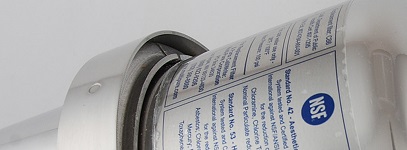
You may have heard about water filtration pitchers or filter
systems that claim to remove Total Dissolved Solids from drinking water. While
this may sound like a benefit and perhaps convince you to purchase that
product, let’s take a look at the bigger picture. While scary sounding on a marketing label, total dissolved
solids (TDS) bear a little more examination.
According to the World Health Organization, “TDS in water supplies
originate from natural sources, sewage, urban and agricultural run-off, and
industrial #wastewater. Salts used for road de-icing can also contribute to the
TDS loading of water supplies.” Of
course, this type of #TDS would certainly be considered harmful. However, the #WHO also states that the term total
dissolved solids, “describe(s) the inorganic salts and small amounts of organic
matter present in solution in water. The principal constituents are usually
calcium, magnesium, sodium, and potassium cations and carbonate,
hydrogencarbonate, chloride, sulfate, and nitrate anions.” Many of these are actually
dissolved minerals that are vital to the health of the human body.
We here at #Water2Drink want to share this short, informative
video from Multipure International. In it, Kenton Jones, Vice President of
Marketing, demonstrates that, while certain #water samples are shown to contain
no TDS, those samples are indeed most harmful to your health!
The Multipure family of Drinking Water Systems is NSF-tested
and certified to reduce turbidity and submicron particulate matter. However, #Multipure Drinking Water Systems do
NOT remove the healthful dissolved minerals that your body needs, such as
calcium, sodium and magnesium.
Please be sure to evaluate all health claims of the drinking
water system you may be considering. Water2Drink.com is your resource that is
available to help you look past the marketing hype and pinpoint the Multipure
filter that is right for you.
|
 2 Comments 2 CommentsTweet |
Simply the BestMonday, February 13, 2017 - Posted by Water2Drink, in Health, Water News, Products, Water Safety
Once again, the Multipure MP750SB has been rated #1
in the “Undersink Water Filter” review category of a major consumer product
review and ratings magazine. The Multipure Aquaversa “MP750SB” is listed in a
chart at the bottom of Page 33 in the March 2017 edition of the magazine. Water2Drink.com was founded in 2003 on the basis of
providing the absolute best water filtration products. We believed then, and
still believe, that the #Multipure Drinking Water Systems family of products is
the best available filter on the market.
Multipure’s family – the AquaVersa, the AquaPerform, the AquaRO, and the
AquaLuxe (the “next generation” of water filtration) – consistently rank as the highest rated in performance, not
only by major news publications, but also by NSF International, an independent
3rd party that certifies the performance claims of manufacturers. #NSF
provides clear, concise documentation of what contaminants are reduced, and the
percentage of reduction. Multipure products provide industry-leading reductions
of the widest range of contaminants at an affordable price. If you are
comparing water filtration systems, be sure to look for the NSF performance
data sheets for any product you consider for purchase.
We here at #Water2Drink want you to experience clean, fresh
water. Once you have purchased a Multipure product, Multipure offers a 90-day,
no questions asked, satisfaction guarantee. However, this generous full product
price return policy is rarely used! The majority of our customers (99%+) not
only keep the Multipure filter, they also will share their positive experience
with friends and family. Wouldn’t you want your loved ones to be protected from
the onslaught of contaminated water events that are occurring all over the
nation? |
 1 Comments 1 CommentsTweet |
Not Everything Should be Bigger in TexasSunday, January 15, 2017 - Posted by Water2Drink, in Water News, Water Safety
A recent News4SA (San Antonio News) report warns nearby
residents that for almost a year, they have had #asbestos – a LOT of asbestos –
in their drinking water. And regarding asbestos, the familiar #Texas slogan definitely
should not apply. The leaders of Devine, TX, about 40 miles southwest of San
Antonio, don’t know how the problem occurred but they are “reassuring residents…
that the water is safe.”
According to the News4SA report, the “Texas Commission on
Environmental Quality (TCEQ) records reveal one reading in January of 44.3 MFL –
more than six times the maximum contamination limit set by the Environmental
Protection Agency. In October of last year, two samples contained more than
twice the limit.” Officials hope that these numbers reveal it’s a sampling
problem, instead of a full contamination of the drinking water.
The general public often assumes that their suppliers of
drinking water (either their local government or private companies) are aware
of #EPA guidelines, and that the suppliers provide all possible deterrents to
water contamination. However, this situation shows that, even while the
drinking water supplier (in this case, the city of #Devine) is aware of the EPA
regulations, they cannot always know when or how contamination occurs. Often, system-wide drinking water
contamination is detected well after the contamination has occurred, and
residents are left wondering, “How long have I been drinking contaminated water?”
The only effective way to ensure you are drinking fresh,
clean water is to claim responsibility for your water cleanliness. It has been
said that, if you are not filtering your water, then YOU become the filter. You can rely on the Multipure Drinking Water
Systems solution. Each #Multipure Drinking Water System is NSF-tested and
certified to effectively reduce contaminants nearly 99%, sometimes more,
including asbestos. |
 0 Comments 0 CommentsTweet |
Chromium-6Thursday, November 3, 2016 - Posted by Water2Drink, in Health, Water News, Water Safety
Remember the movie, Erin Brockovich? The March, 2000,
movie is a biographical film based on the true story of Ms. #Brockovich, a legal
crusader who fought Pacific Gas and Electric Company of California for releasing
Chromium VI (or, hexavalent chromium), which made its way into the public
drinking water system in Hinkley, CA. While some of the events of the movie may be dramatized for
effect, chromium-6 is a very real contaminant with serious side effects. It is
a human #carcinogen when inhaled, and can increase the risk of lung cancer.
Skin irritation, asthma, perforated nasal septa, nosebleed, nasal cancer, sinus
cancer, eye damage, kidney and liver damage, pulmonary congestion and edema,
gastric pain, and erosion/discoloration of one’s teeth are all health effects
associated with exposure to chromium-6.
You may believe this problem was limited to just California,
but a recent report from the Environmental Working Group (#EWG) states that “Under
an Environmental Protection Agency program, from 2013 to 2015, local water
utilities took more than 60,000 water samples and found chromium-6 in
more than 75 percent of samples” (emphasis added). Furthermore, while
certain large cities such as Phoenix, Houston, and Los Angeles have the highest
levels of contamination, the EWG reports, “every U.S. water system serving more
than 1 million people has chromium-6 concentrations that could be harmful.”
Water2Drink is proud to exclusively offer Multipure
International’s family of Drinking Water Filtration Systems. With the recent
prevalence of news stories regarding #chromium-6, Multipure has released a statement
which specifically addresses the solutions offered by Multipure systems.
Specifically:
|
 0 Comments 0 CommentsTweet |
Is Your Community the Next Headline?Tuesday, July 26, 2016 - Posted by Water2Drink, in Water News, Water Safety
As you probably have heard, the community of Flint, MI, is
dealing with the repercussions of poor city management decisions that resulted
in a massive contamination of the city’s water supply. While this community was
fortunate to have researchers from #VirginiaTech discover the crisis, just who
is looking out for the health of YOUR community’s water? A recent Washington Post article highlights a report released
by the Natural Resources Defense Council, the organization whose members
continue to fight for safe, clean drinking water across the country. Founded in
1970, today the NRDC’s leadership team “makes sure the organization continues
to work to ensure the rights of all people to clean air, clean water, and
healthy communities.” The not-for-profit #NRDC partners with local communities
and their representatives, businesses and citizens to work on environmental
issues facing their community.
This NRDC report, dated June 28, 2016, discusses the shortcomings
and violations of the Environmental Protection Agency’s policies, and
illustrates “the extraordinary geographic scope of America’s lead crisis. In 2015, 18 million people were served by
water systems with lead violations. These violations were recorded because the
systems were not doing everything that they are required to do to protect the
public from lead issues….” Surprisingly (and frighteningly), #Flint, MI didn’t
show up in the EPA database as having violations of EPA requirements. The
Washington Post article goes on, "In almost 90 percent of cases, neither
the states nor the #EPA takes any formal enforcement action," said
co-author Erik Olson, who directs the [NRDC] advocacy group's health programs." Thankfully, local water customers and
communities nationwide have organizations such as the NRDC to help alert and
advocate for them.
So how can you and your neighbors protect your health? By
installing an effective point-of-use drinking water filter, such as a Multipure
Drinking Water System. Only the #Multipure
family of drinking water systems provide you with a solid carbon block filter that
is NSF-tested and certified for high-level reduction of #lead contamination. The inexpensive faucet-attached or pitcher type
filters sold in retail stores may advertise a carbon filter; however, these filters
are often nothing more than granulated charcoal. While granulated charcoal may
help reduce chlorine taste and odor, they are not NSF-certified to reduce
contaminants such as lead, mercury, BPA’s, arsenic, and emerging
compounds. Every Multipure Drinking
Water System sold by Water2Drink.com comes with certified NSF Performance Data,
which clearly shows the contaminant reduction capacity. |
 0 Comments 0 CommentsTweet |
It's Not Just the ChlorineFriday, June 3, 2016 - Posted by Water2Drink, in Water News, Water Safety
With the nation’s attention focused on the ongoing lead
poisoning of Flint, Michigan’s drinking water, you may be re-examining your own
local water source and the ways in which your municipality disinfects it. Many cities, towns, and smaller water associations may use
chorine as a primary disinfectant. But recently, the use of chloramines as a
secondary disinfectant has increased since chloramines can help reduce the
regrowth of microorganisms during the transport of water between the treatment
plant and consumers. However, there is an increasing cause for concern
regarding the use of chloramines in addition to chlorine as a disinfection
agent.
A recent article on the Water Technology website states
that, “Inorganic chloramines are increasingly chosen as secondary disinfectant
treatments for drinking water in municipal water systems because they are less
chemically reactive than free #chlorine. They produce fewer disinfection
byproducts than chlorine, and they survive longer during drinking water
distribution to consumers.” The article
by Dr. Joseph Cotruvo, Technical Editor and former director of the EPA Drinking
Water Standards Division, goes on to say that updated Environmental Protection
Agency regulations regarding total trihalomethanes (TTHM), “tightened
compliance computation requirement in 2006. All of these [updated regulations] increased
the numbers of water systems likely to be out of compliance with TTHMs or HAAs
and led many to change to the chloramine approach.”
Do you wonder why Water2Drink worries about chloramines, and
why you should too? As with chlorine, the disinfection qualities of #chloramines
can be quite beneficial, right up until the point of ingesting them in your
water. Chloramines are harmful to kidneys and can negatively affect kidney
dialysis patients. Swimming pools, enclosed fountains, and other indoor treated
water sources will release chloramines, which must then be vented properly so
as to avoid respiratory irritation. This too can negatively affect citizens
with asthma and other respiratory illness.
And in addition, the use of chloramines results in changes
to the treated water chemistry which in turn disintegrates old #lead water
lines, releasing lead into the treated water as it travels into your home or
business. That is exactly what happened in #Flint.
There is a highly effective way to protect yourself and your
loved ones. Install a point-of-use, solid carbon block Multipure Drinking Water
System! A Multipure Drinking Water System will become the final barrier to the
increasing hazards of municipally treated water. Water2Drink.com exclusively
sells the Multipure family of Drinking Water Systems which are NSF-tested and
certified to reduce not only chlorine, but also chloramines to NSF/ANSI
Standard 42 (>98.3% reduction), and TTHMs to NSF/ANSI Standard 53 (>99.8%
reduction). Multipure Drinking Water Systems also reduce lead, mercury, radon, and
a multitude of other contaminants. Contact
Water2Drink.com today and let us help you make the best selection of a Multipure
Drinking Water System for your family.
|
 0 Comments 0 CommentsTweet |
Helping the ChildrenFriday, May 6, 2016 - Posted by Water2Drink, in Health, Water News, Water Safety
Recently, a quote came across the desk here at
Water2Drink.com: “There is no such
thing as ‘other people’s children.’” (Glennon Doyle Melton/#Momastery blog)
Water2Drink.com and Multipure International are family-based
businesses. Together, we believe that
everyone should be able to drink high quality, clean, healthy water at an
affordable price. The recent events of water-based #lead poisoning in Flint,
MI, highlight the obligation we have to provide clean, fresh water, the most
basic of human needs, to children that are affected by this disaster.
Multipure has announced that through its Pure Foundation, it
will be providing up to 1,800 children and families in #Flint with Multipure’s
certified lead-reducing (up to 99.9%) water filters. The Pure Foundation is collaborating with the Flint Boys
and Girls Club to install and maintain Multipure Drinking Water Systems at no
charge. These Multipure Drinking Water Systems
will provide these children and families safe and clean drinking water, both in
their homes and at the Boys and Girls Club location.
We invite you to view this video, where Multipure’s
Executive Vice President, Jennifer Rice, speaks about the Flint crisis and how
the Pure Foundation has an action plan in place to help these families.
You can be a part of this movement as well! Please contact Water2Drink if you’d like
to purchase and donate a #Multipure Drinking Water System for the children of
Flint. You can also donate your used
Multipure Drinking Water System, if you are planning to upgrade your existing
system. There is no such thing as other
people’s children. The crises that happen to children eventually affect all of
us. Getting involved on behalf of these
children will make an enormous difference in their lives. Thank you.
|
 0 Comments 0 CommentsTweet |
Small Community, Big ProblemWednesday, April 6, 2016 - Posted by Water2Drink, in Health, Water News, Water Safety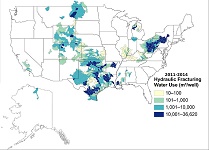
Would you want your water source to contain diesel fuel?
How about having an unlined wastewater pond nearby that contains chemicals like
benzene and xylene? Fracking fluids in your morning beverage? A case study of a small Wyoming town reveals that
practices common in the fracking industry may have widespread impacts on
drinking water resources. Residents of
Pavillion, WY, had concerns when their drinking water became fouled in both
taste and odor. So they complained, and in 2011 the U.S. Environmental
Protection Agency issued a report that put the 231 residents directly in the
middle of the expanding debate over hydraulic fracturing, or as it is commonly
known, “fracking.”
“The EPA report, which linked shallow fracking to toxic
compounds in aquifers, was met with heavy criticism from the drilling industry
as well as state oil and gas regulators. Three years later, having never
finalized its findings, #EPA turned its investigation over to Wyoming. The
state released a series of reports without firm conclusions, and, as of last
month, has said it has no firm plans to take further action. In the meantime,
the federal Agency for Toxic Substances and Disease Registry has advised area
residents to avoid bathing, cooking or drinking with water from their taps,”
says an article in the Stanford News. On March 29, 2016, Stanford University published a new study in Environmental Science & Technology
that finds the Pavillion #fracking operations “have had clear impact to
underground sources of drinking water.”
While this is only one community’s story, there are
myriad news articles and information indicating that fracking creates
widespread impact to our underground water supply. As Rob Jackson, Co-author of
the #Stanford study, states, “There are no rules that would stop a company from
doing this anywhere else.” Jackson also
states, “The EPA has consistently walked away from investigations where people
and the environment appear to have been harmed" by fracking's impact on
groundwater.” And lead author Dominic
DiGiulio adds, "This is a wake-up call.
It's perfectly legal to inject stimulation fluids into underground
drinking water resources. This may be causing widespread impacts on drinking
water resources."
The only way to ensure your water source is protected
against fracking fluids that are a toxic mix of chemicals, fuels, and acids, is
to use a point-of-use water filter such as a Multipure Drinking Water
System. Each member of the Multipure family
of Drinking Water Systems employs submicron (0.5 micron) solid carbon block
technology that uses mechanical filtration, electrokinetic adsorption and
chemical/physical adsorption processes.
The #carbon filtration performance is independently tested and certified
by NSF International. Every #Multipure Drinking Water System also comes with
its own Performance Data Sheet, which lists contaminants and the percent of
reduction of each.
|
 0 Comments 0 CommentsTweet |
Lessons from Flint, MichiganTuesday, February 16, 2016 - Posted by Water2Drink, in Water News, Water Safety
Nearly every news source recently has been reporting about
the water crisis in Flint, Michigan. Many Americans are now concerned, and
rightfully so, about the decisions that are made in their communities and
cities regarding the quality of their local water source. The Flint crisis began long before the water contamination,
when the community drastically declined after the auto industry shut their
doors. Many residents left the area, and of those that stayed behind, about 40%
of residents are below the poverty line. The city was declared to be in a
financial state of emergency in 2011, and the state took control of the budget.
During that time, the state made crucial life-changing decisions that have now
affected every resident of #Flint. “’When the governor appointed an emergency
financial manager (in 2011), that person came here ... to simply do one thing
and one thing only, and that's cut the budget, at any cost,’” said Michigan
Congressman Dan Kildee,” according to an online article posted on CNN. So, the
state switched the water supply from Lake Huron to the Flint River, notorious
for its contamination.
Once residents began to notice the change in their water,
they began to ask questions. Initially thought to be sewage by some residents,
in fact the brown water was found to be iron. “The Flint River is highly
corrosive: 19 times more so than the Lake Huron supply, according to researchers
from Virginia Tech,” says the CNN article. The problems began when the #FlintRiver water was provided to consumers without an anti-corrosive treatment, so
the water eroded the iron water mains, turning the water brown. Additionally, “About
half of the service lines to homes in Flint are made of lead and because the
water wasn't properly treated, #lead began leaching into the water supply, in
addition to the iron.” Now, Flint residents realize they have been drinking water
filled with lead contamination.
This scenario played out for nearly two years, with city and
state officials telling residents that “everything was fine.” But in August,
2015, a group of #VirginiaTech researchers conducted in-home testing. They discovered
elevated lead levels in the water and went public with the information.
While this has happened in an impoverished city, it also
highlights how quickly one single action taken by a government or municipal
agency can affect hundreds of thousands, possibly millions of residents of both
small towns and large cities alike. There are questions about why the state and
local officials denied the problem for almost two years before residents were
informed of the lead contamination. And if your local water source is being
properly treated with disinfectants and federally mandated anti-corrosion
agents, are those chemicals and by-products something you want in YOUR water
supply?
The only effective way to know for certain that your water
is clean, fresh, and free of contamination and water treatment chemicals is to
own a high quality point-of-use water filtration system. The system that you
choose should be NSF-tested and certified to reduce the greatest number of
contaminants, such as the Multipure family of water filtration systems.
Water2Drink.com can provide you with information regarding the certification of
Multipure Drinking Water Systems and help you select the best system for you
and your family’s needs. |
 0 Comments 0 CommentsTweet |
New Year, New YouTuesday, January 12, 2016 - Posted by Water2Drink, in Health, Water News
Image: Stig Nygaard Now that the #holidays are over, the decorations are put
away, and the celebrations are just memories, what are your plans for the New
Year? Did you make a resolution to be healthier? Do you want to
improve your circulation, the absorption of nutrients, or relieve constipation? Do you hope to lubricate your aging joints,
or make your skin look younger? How about improving brain function?
While this list may not be the one you wrote down, you can
improve your health and vitality in all of these areas just by increasing your
water intake! Providing your body with fresh, clean, #healthywater is by far
the easiest, and yet most impactful, action you can take to improve your
health.
Contact Water2Drink.com today and let us help you start your
new year off with a new #Multipure Drinking Water System. The entire family of
Multipure Drinking Water Systems are NSF-tested and certified to remove the
greatest number of contaminants from your water, while retaining the healthy
minerals that your body needs. Good health can be yours this year, starting with
a glass of fresh, Multipure-filtered water. |
 0 Comments 0 CommentsTweet |
H. Allen RiceWednesday, November 25, 2015 - Posted by Water2Drink, in Health, Water News, Products, Water Safety
Water2Drink.com shares the sad news of the passing of H.
Allen Rice, Co-Founder of Multipure International. As shared by the Rice family, “Allen worked tirelessly
throughout his life to help others achieve success. As many of you know,
his passion for Multipure knew no bounds. He was completely dedicated to
the success of the Multipure family of distributors and staff members.
His loss is one that will no doubt be felt by many given the thousands of
lives he has touched over the years. The love and pride Allen had
for the Multipure family was clearly evident on his face whenever he spoke.
He ultimately created a legacy that we are confident will continue for years to
come… a legacy that can be seen in the love and passion embodied in our
Multipure family that we hold near and dear to our hearts.”
Allen passed peacefully on November 14, 2015. He was 78
years old. |
 0 Comments 0 CommentsTweet |
What's In Your Bottle of Water?Sunday, November 15, 2015 - Posted by Water2Drink, in Health, Water News
PepsiCo, the big business owner of Aquafina bottled water,
wanted you to think their water was pure and provided by some mountaintop
spring, if the artwork on the label was any indication. Under pressure from
activists raising the issue of misleading marketing, PepsiCo will be changing
its tune (and its label). “The label on #Aquafina water bottles will soon be
changed to spell out that the drink comes from the same source as tap water,”
says an online news story posted by abcnews.go.com in October, 2015. Water2Drink.com has raised this issue before. We want our
customers to know that even the best marketing does not always represent the
truth. While companies such as PepsiCo, Coca-Cola (owner of #Dasani bottled
water) and Nestle (Pure Life water) want you to believe in the purity of their
product, the reality is these huge corporations use local, public water sources
for their products. While it may be true that they do purify the #water by
processes such as #distillation and reverse osmosis, each of these methods may
produce an end result with less than desirable characteristics. For example, a
reverse-osmosis system removes beneficial dissolved minerals contained in the
water source, such as calcium, magnesium and iron, which are necessary for the
health of the human body. Distillation also removes all minerals from water, and
the health effects of demineralized water can increase diuresis (excessive
urine production) and eliminate electrolytes. The dissolved minerals can help
protect against nutritional deficiency, and may cause serious health issues
when these important minerals are removed.
The bottom line is, the only true way of knowing how “pure”
and clean your water is, is to use a high-quality point-of-use drinking water filtration
system. #Water2Drink exclusively sells the Multipure family of Drinking Water Systems.
With 45 years of NSF tested and certified water filtration products, Multipure
stands out as a leader in the water filtration industry. All #Multipure
Drinking Water Systems are certified to remove or reduce a wide range of disinfectants
(chlorine, chloramines) and contaminants, including pharmaceuticals, while at
the same time retaining beneficial dissolved minerals. |
 0 Comments 0 CommentsTweet |
Is Your Curiosity Insatiable?Monday, November 2, 2015 - Posted by Water2Drink, in Water News, Products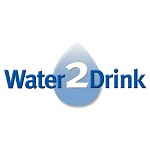
It’s human nature to want to learn all about a topic that
interests us. Technology today brings a world of information to our fingertips;
with just a few clicks on a computer, you can begin or continue a journey of
discovery and information that would have been impossible just a few decades ago. Water2Drink.com likes to occasionally share sources of
information that are meaningful to our customer’s knowledge base about drinking
water and water issues. While our website, Water2Drink.com, contains a
tremendous amount of information about Multipure International’s family of
Drinking Water Systems, along with the ability to directly order #drinkingwater
products on our secured network, we also like to provide links to information
through our blog and website. For example, you can connect with the
Environmental Drinking Water Database from our homepage (under “Useful Links”),
enter your zip code or water company name, and receive instantaneous
information regarding your local water utility’s water quality report. #Water2Drink also provide links on our
website to all #Multipure product documentation, so you can quickly and easily
find the answers you need from the Owner’s Manuals and Performance Data Sheets.
Another resource that can provide you with information is
the Environmental Protection Agency (EPA). Were you aware that the #EPA
operates a Safe Drinking Water Hotline? According to the EPA website, the
hotline responds to questions regarding these areas of water service and
standards:
Water2Drink.com invites you to explore the wealth of
information on our website, including our Resource Center. Our Resource Center
goes beyond technical descriptions of the Multipure Drinking Water Systems, providing
information on how to choose the best drinking #waterfilter for your needs, product
performance information, health information, #FAQs… the list goes on and on!
Visit Water2Drink or call us today if your curiosity about
healthy water has drawn you to seek answers!
|
 0 Comments 0 CommentsTweet |
Toxic Heavy MetalsThursday, October 15, 2015 - Posted by Water2Drink, in Health, Water News, Water SafetyWe hear a lot about the dangers of lead exposure and
poisoning, but there are other metals that can cause damage to the human body.
Mercury is another contaminant against which you want to protect yourself. Mercury (Hg) is a
silvery metal that is liquid under normal conditions. It forms a variety of
organic and inorganic compounds, including Hg+1 and Hg+2 salts, oxides and
sulfides, as well as organometallic compounds like dimethylmercury and
methylmercuric chloride. You may
remember playing with mercury as a child in science class or, if you broke an
old-fashioned thermometer, pushing mercury droplets around and watching them
join up with the others. Today, #mercury and its compounds have many commercial
and industrial uses. The metal has been used in #thermometers, barometers, other
scientific instruments, and as a seal in some electrical switches. Mercury
vapor is used in streetlights and florescent lamps. The salts, which are
poisonous, have been used as biocides. Until 1991, interior latex paints
commonly contained mercuric fungicides. It is also used in dental amalgams,
alloys that are formed with other metals such as gold or silver.
While mercury has
many useful applications, it is poisonous and can enter the body through
inhalation, ingestion, or directly through the skin. It is an accumulating
contaminant that can build up in the kidneys, and causes severe illness and
death.
While you may be
able to avoid direct inhalation or skin contact with mercury, mercury contamination
is common in #water sources. The Environmental Protection Agency (#EPA) lists the
major sources of mercury contamination are discharges from
factories/refineries, erosion of natural deposits, and runoff from croplands
and landfills. According to Water Technology, “In the article, [Dr.]
Cotruvo lists the following water treatment options for mercury: Conventional
coagulation, sedimentation and filtration
can remove about 80 percent of inorganic mercury and about 30 percent of
organic mercury.” (emphasis added).
The entire family of
Multipure Drinking Water Systems are NSF-tested and certified to reduce mercury
from your drinking water source by 99%, along with other many other
contaminants such as lead, radon, and PCBs. Since 1970, #Multipure has been an
industry leader in the manufacture of compressed solid-carbon filters that
address new and existing contaminants. Contact Water2Drink.com today and let us
help you choose the best Multipure Drinking Water System for your home and
family.
|
 0 Comments 0 CommentsTweet |
Water Is LifeFriday, October 2, 2015 - Posted by Water2Drink, in Water News
This week, the scientific world was eager to announce the
evidence of water on Mars, a planetary neighbor of Earth’s in our solar system.
In reporting on NASA’s announcement, a USA
Today online article reports that Mars “boasts multiple seeps of salt-laden
water that were wet, or at least damp, as recently as last year.” The evidence of water (dark streaks flowing on the slopes of
Mars’ craters and mountains) includes “the signature of waterlogged molecules
of perchlorate, chemicals made up of chlorine and oxygen,” reports the USA Today article. “Something is
moistening Mars’ ample deposits of perchlorate, said study leader Lujendra Ojha
... And that something must be liquid water.”
So why is this such big news? Water is truly the key to all
life. Without water, no life as we understand it could possibly exist. Water is
the primary element that planetary scientists seek out to determine if life can
be supported on other planets, as it is here on Earth.
Today, Water2Drink asks that you take a moment to recognize
the enormity of what our Earth has to offer. Our Earth provides incredible variety
in the many species of plants and animals. Its weather patterns carve
incredible landscapes. Its atmosphere of precisely regulated gasses and
elements. Its ability to regenerate. Can you recognize the importance of water
in each of these systems? Without water, the Earth’s environment would be
drastically different, and certainly not life-sustaining.
Water is life. Cherish it.
#NASA #Mars #Earth #WateronMars #Water2Drink #WaterIsLife
|
 0 Comments 0 CommentsTweet |
Corrosive ContaminantsWednesday, September 16, 2015 - Posted by Water2Drink, in Health, Water News, Water Safety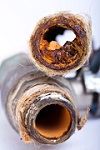
A recent statement by the Environmental Protection Agency says
it will help Flint, Michigan develop plans to implement lead and corrosion
reduction in the city’s service lines. “The EPA said that while city water is within allowable
levels for lead, it has ‘recommended that Flint implement corrosion control
treatment as soon as possible since the city’s lead service lines can leach
lead into the drinking water if left untreated,’” says the Sept. 9th
statement to The Flint Journal-MLive website.
This statement was issued a day after Virginia Tech
University warned Flint residents not to use the tap water for drinking or
cooking without flushing the lines before using. The #VirginiaTech researchers
also recommended using a water filter to remove lead.
Lead contaminated service lines are common across the U.S.,
and #lead contamination of drinking water occurs with regularity as these lines
age and deteriorate underground. “Even at low levels, lead may cause a range of
health effects, including behavioral problems and learning disabilities,
according to the #EPA,” which also highlights these effects pose the most risk
to children 6 years old and younger.
If you are not using
a water filter, your internal organs become the filter. To protect your
vital organs such as the liver, kidneys, and endocrine system from corrosive
contaminants, #Water2Drink believes everyone should use an effective,
point-of-use water filtration system such as a Multipure Drinking Water System.
The #Multipure family of Drinking Water Systems address contaminants such as
lead, #arsenic, mercury, PCBs, and emerging contaminants such as prescription
drugs, #pesticides, and flame retardants. The reduction of these contaminants
is tested and certified by NSF International, the public health and safety
organization.
Contact Water2Drink.com today and let us help you determine
if your local water is at risk for lead or other corrosion contaminants. If it
is, we are here to explain the Multipure solution and how you can protect your
health.
|
 0 Comments 0 CommentsTweet |


